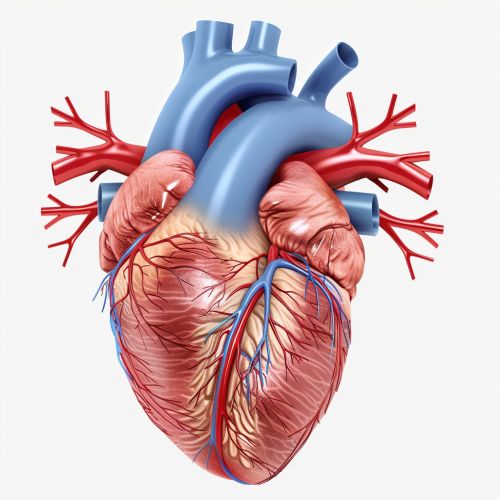Myocardial Infarction
Introduction
A myocardial infarction (MI), commonly known as a heart attack, is a serious medical emergency characterized by the interruption of blood supply to a part of the heart, causing heart cells to die. This is typically caused by a blockage in one or more of the coronary arteries that supply blood to the heart muscle.


Causes
The primary cause of myocardial infarction is coronary artery disease (CAD), a condition in which the coronary arteries become narrowed or blocked due to the build-up of atherosclerotic plaques. These plaques are primarily composed of lipids, particularly low-density lipoprotein (LDL) cholesterol, and inflammatory cells. Other causes include coronary vasospasm, coronary thrombosis, and coronary embolism.
Pathophysiology
The pathophysiology of myocardial infarction involves the interruption of blood flow to the heart muscle, leading to ischemia and subsequent cell death or necrosis. When a coronary artery is blocked, the area of the heart it supplies becomes starved of oxygen and nutrients, a condition known as ischemia. If the blockage is not quickly resolved, the affected heart cells begin to die, a process known as necrosis.
Symptoms
The most common symptom of a myocardial infarction is chest pain or discomfort, often described as a heavy pressure, squeezing, or crushing sensation. Other symptoms may include shortness of breath, nausea, vomiting, sweating, and a sense of impending doom. Some people, particularly those with diabetes or the elderly, may experience a 'silent' myocardial infarction, in which they have no symptoms or only mild ones.
Diagnosis
Diagnosis of a myocardial infarction is based on the patient's symptoms, medical history, physical examination, and the results of diagnostic tests. These tests may include an electrocardiogram (ECG), blood tests for cardiac enzymes, and imaging studies such as an echocardiogram or coronary angiography.
Treatment
Treatment for a myocardial infarction aims to restore blood flow to the heart muscle as quickly as possible to minimize damage. This may be achieved through medications such as thrombolytics, which dissolve the clot blocking the artery, or procedures such as percutaneous coronary intervention (PCI), in which a catheter is used to open the blocked artery.
Prognosis
The prognosis following a myocardial infarction depends on the extent of the heart damage, the patient's overall health, and the speed and effectiveness of treatment. With prompt treatment, many people can survive a myocardial infarction and go on to live a productive life. However, some may experience complications such as heart failure, arrhythmias, or recurrent myocardial infarction.
Prevention
Prevention of myocardial infarction primarily involves managing risk factors for coronary artery disease, such as high blood pressure, high cholesterol, diabetes, smoking, and obesity. This may involve lifestyle changes, medications, or in some cases, surgical interventions.
